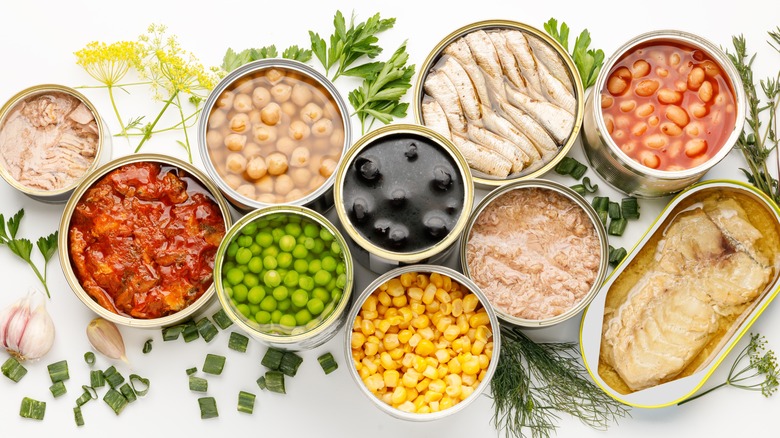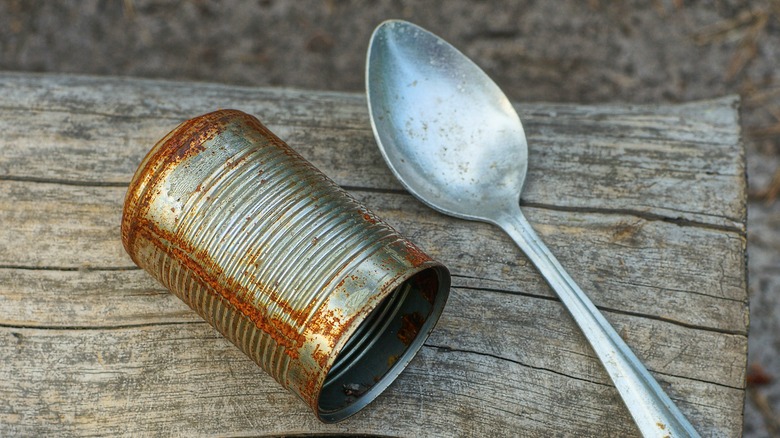Here's How People Opened Canned Food Before The Can Opener Arrived
We may receive a commission on purchases made from links.
Nowadays, storing canned food and opening it up is a simple process: You grab your can opener from the kitchen drawer, place it on the can's side, squeeze the handle, and rotate the can. Believe it or not though, cans of food were around well before can openers. In fact, there's a gap of nearly 50 years between the invention of the can and the invention of the can opener. Cans first came about in early 1800s Europe (Napoleon was involved — more on that soon), but the first metal cans were expensive, difficult to produce, and made of a thick iron which required a hammer and chisel to pop open. Besides hammers, it was also common for soldiers to open canned meals using their bayonets, which was hardly a safe way to open cans.
Cheaper and smaller steel cans became easier to manufacture in the coming decades, and in 1858, an American named Ezra J. Warner invented a simple tool with two blades. One blade was for firmly holding the side of the can, while a small sickle sliced the top off and left a dangerously sharp edge. Thus, the first can opener was made, and while it was only marginally safer than a hammer and chisel, various improvements followed until the wheeled can opener you'd recognize was invented in 1920 by Charles Arthur Bunker.
An Early history of the can (and its opener)
You can somewhat thank Napoleon Bonaparte for the can of Campbell's soup you're eating tonight. Though it can seem a bit of a historical stretch to connect the famous French general to the canned creation, Napoleon famously offered a prize of 12,000 francs for anybody who could invent a reliable way to store food for his army, which would grow quite large in the coming years. Around 1810, an early can prototype made of airtight glass was created by the confectioner Nicolas François Appert (who received the prize money). These did a great job of preserving food, and metal cans showed up soon afterward, patented by an Englishman named Peter Durand. Durand's food cans caught on and were the blueprint for the cans which Warner's tool would saw open.
Here in the present day, you've still got options if you don't have a can opener handy. In terms of what's likely already in your kitchen, a spoon is the safest can opener substitute. You can use the spoon to pick and pry at the edge of the lid until it creates an open slit beneath it, which gives you enough room to slide more of the spoon underneath until you can lift it all off. The same can be done with a knife but do keep a close eye on your fingers. Either way, it certainly beats using a bayonet.

